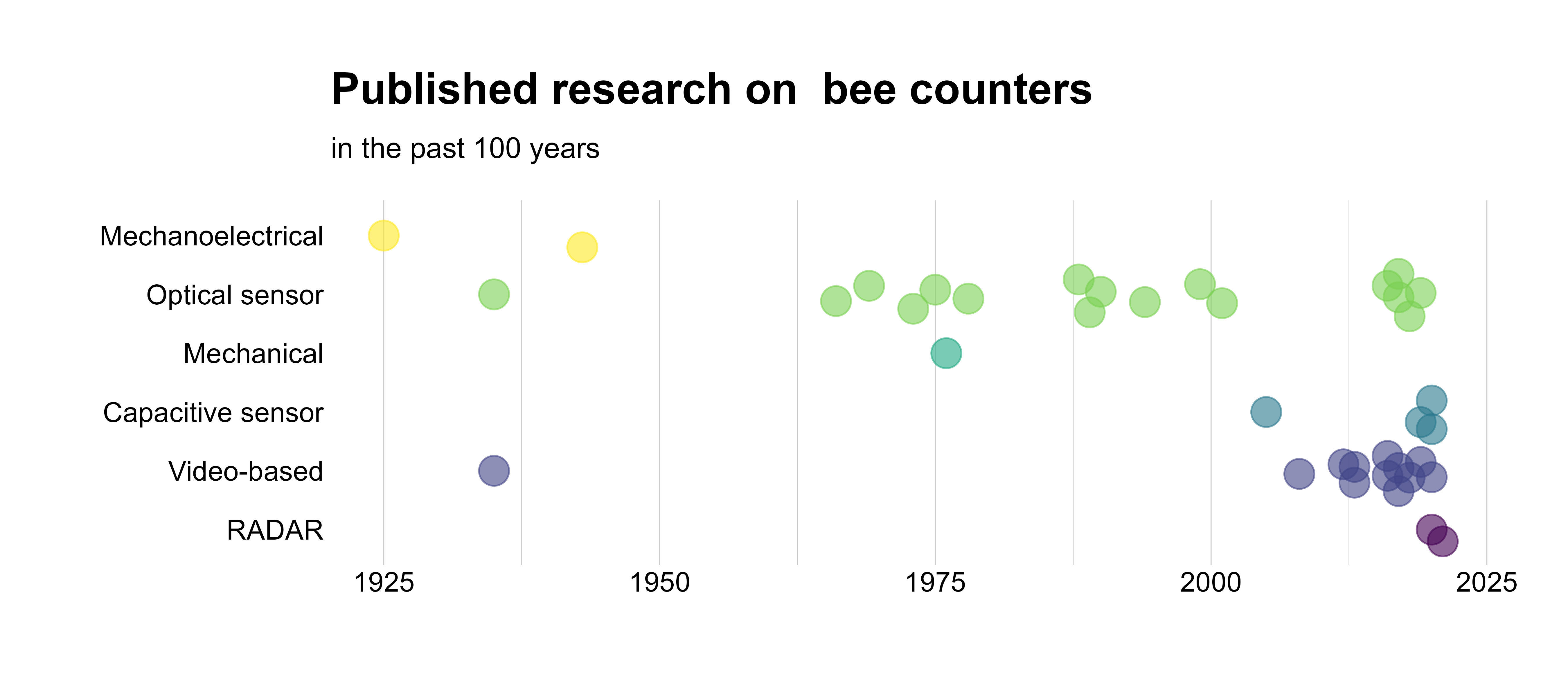DOI: 10.1111/aab.12727
Introduction: For nearly a century, the quest to understand honey bee behavior and foraging patterns has driven the development of electronic bee counters. These sophisticated devices hold the promise of remote hive monitoring while preserving the natural flight behavior of colonies and generating precise scientific data. However, the realization of this potential has been hindered by a lack of standardized validation methods and challenges in interpreting flight data.
Historic Development: The evolution of electronic bee counters represents a testament to human ingenuity and technological advancement. Over the decades, various technologies have been employed, each with its strengths and limitations. From early mechanical devices to modern sensor-based systems, the journey toward automated bee flight monitoring has been marked by innovation and perseverance.
Challenges and Opportunities: Despite significant progress, several challenges persist in the realm of automated bee flight monitoring. Foremost among these is the need for standardized validation methods to assess the precision and accuracy of bee counters. Without robust validation protocols, the scientific utility of the data generated by these devices remains uncertain. Additionally, interpreting flight data to discern the effects of environmental or anthropogenic factors presents a formidable challenge, requiring nuanced analytical approaches.
Recent Developments and Promising Trends: Amidst these challenges, recent developments offer glimmers of hope. Advances in sensor technology, data analytics, and machine learning hold the potential to revolutionize the field of automated bee flight monitoring. By harnessing these innovations, researchers can not only enhance the precision and reliability of bee counters but also extract deeper insights from the wealth of data they provide.
Review Objectives: In our latest publication, we embark on a comprehensive review of the historic development of automated bee flight measurements. By critically evaluating existing validation methods, we aim to spur improvements in precision and standardization. Furthermore, we explore current advances in data interpretation, with the goal of fostering greater comparability and reproducibility in future analyses of bee counters.
Conclusion: As we stand on the precipice of a new era in automated bee flight monitoring, it is imperative that we address the challenges that have impeded progress thus far. By embracing standardized validation methods and leveraging cutting-edge technologies for data interpretation, we can unlock the full potential of electronic bee counters for scientific inquiry. Together, let us embark on a journey of discovery, guided by curiosity, collaboration, and a steadfast commitment to understanding the intricate dance of honey bees in their natural environment.
Download publication
Approaches, challenges and recent advances in automated bee counting devices: A review Journal Article
In: Annals of Aplied Biology, 2021.

